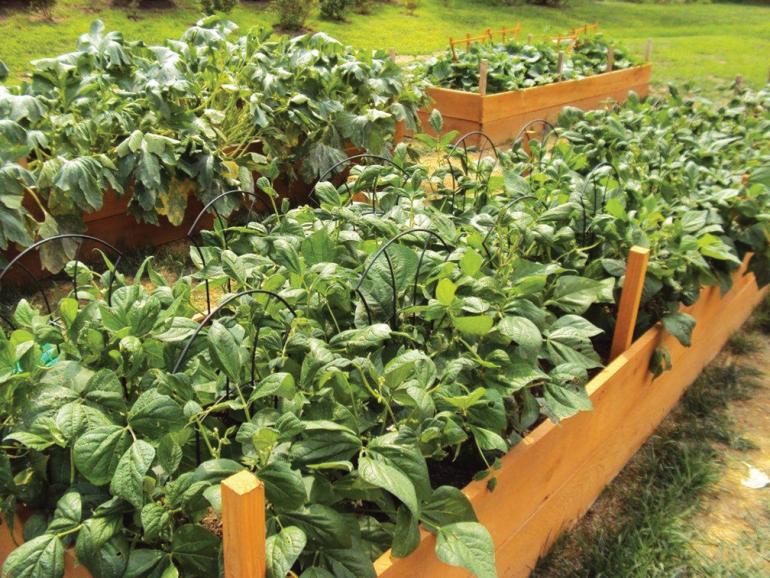Raised Beds
An exercise for the green thumbs.
Want to grow your own veggies? Interest in raised-bed gardening is growing, and our local climate and soils make them a great choice for Bozeman gardeners. Here's how to get started.
Why a Raised Bed?
The soil in a raised bed warms up quicker in the spring. That's very important in our short growing season. And because raised beds sit above ground, drainage is improved. A hooped cold frame, which is simple to construct over your raised beds, adds even more heat and lengthens your growing season even more.
Raised beds also save space because you can put your plants closer together. There is no need for paths, because you do the work from the sides. In fact, raising the garden also makes it easier to plant, weed, and harvest your crops without having to stoop over all the time. Children love to work in a raised-bed garden, too—12” is just the right height for them.
Construction
Four feet is the most common width, which allows you to reach the middle from both sides. The height is commonly 12-24 inches, depending on the dimensions of the lumber you use. Length is up to you and the space you have.
Long-lasting cedar or redwood or pressure-treated timbers are common for constructing the sides and ends of raised-bed boxes. Be sure to reinforce the corners of wooden boxes with rebar, 4x4s, corner braces, and lag screws to keep them from caving out. Keystone blocks, bricks, or stones make attractive alternatives to wood. You might even have some recyclable materials on hand. Prebuilt raised beds are also available, and they're often light, attractive, and require no assembly.
Most vegetables and flowers need full sun, so pick a sunny site for your raised-bed garden. You can build your raised bed over existing grass, but it would be better to kill the grass underneath the bed and loosen up the soil. If your soil is heavy clay, you may want to place gravel underneath the beds for better drainage. Raised beds do not need a bottom.
Amend your soil by mixing in organic matter before filling the beds. A good, readily accessible soil mix to use in your raised beds is ½ compost and ½ topsoil. For even more organic matter, use ⅓ compost, ⅓ topsoil, and ⅓ peat moss. You can add perlite, vermiculite, or gypsum to lighten your soil mix.
What to Plant
Tomatoes and peppers love the warm soils of a raised-bed garden. Carrots, onions, lettuce, spinach, beans—in other words, most vegetables—grow in a raised bed. Sweet corn will grow fine in a raised bed, but it takes up a lot of room, as do pumpkins and squash. Rotate your vegetable crops (especially tomatoes, potatoes, and peppers) into different beds every three or four years.
Try growing herbs in your raised bed. They're usually compact plants and will grow well in the warm soil. Remember to plant marigolds with your vegetables to deter pests. Or, forget the vegetables and plant the whole thing in beautiful annual or perennial flowers.
People often plant raspberries in raised beds to contain their suckers. The well-drained soil also makes them a great place to grow strawberries. It's hard to keep weeds out of a strawberry patch, but planting them in a raised bed will make the weeds easier to control and the berries easier to pick. You can plant inexpensive, bare-root strawberries in your raised bed in April or May, spaced as close together as one foot. Choose hardy varieties such as Cycone (a June-bearing variety recommended for high altitudes) or Ogallala and Quinalt—tried and true everbearing varieties for our climate that bear lots of sweet fruit in early summer and again in August.
Jan Cashman has owned and operated Cashman Nursery & Landscaping in Bozeman along with her husband Jerry and two sons, Joe and Mike, since 1975. She writes a monthly gardening column for At Home magazine, in which a version of this article first appeared.














